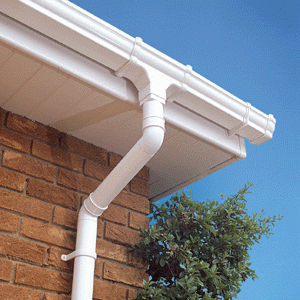This Week’s Top Stories Concerning Drainage
Understanding Roof Drainage: Key Concepts, Methods, and Best Practices
The roof plays an essential function in the protection and durability of a structure. One essential aspect of roof design and maintenance works roof drainage. Proper drainage systems prevent water accumulation, which can result in extreme structural damage and premature degeneration. This article looks into the significance of roof drainage, typical techniques, materials used, and the very best practices to ensure reliable water management.

Significance of Roof Drainage
Roof drainage is critical for several factors:

-
Preventing Water Accumulation: Standing water can cause leaks, structural damage, and prospective mold growth.
-
Enhancing Building Longevity: Proper drainage helps mitigate wear and tear on roofing materials, consequently extending the roof’s life.
-
Preserving Aesthetic Appeal: A well-designed drainage system adds to the general appearance of the structure, avoiding unpleasant water buildup.
-
Mitigating Ice Dams: In chillier environments, effective roof drainage can assist avoid the formation of ice dams, which can damage gutters and roofing products.
-
Environmental Responsibility: Efficient water management through roof drainage can minimize runoff and lessen the ecological impact.
Types of Roof Drainage Systems
Various methods can be employed to make sure reliable roof drainage. The most typical types include:
1. Gravity Drainage
This approach utilizes gravity to direct water away from the roof surface.
-
Internal Drains: Located within the building’s structure, these drains pipes use piping systems to eliminate water straight to the ground or the structure’s drainage system.
-
Roof Drainage Leaders: These are vertical pipelines utilized to bring rainwater from the roof to the ground.
2. Slope Drainage
Producing slopes in the roof structure makes sure water streams towards designated drainage points.
-
Positive Drainage: A pitch or slope directs water to specific drains or scuppers.
-
Boosted Slope Systems: These often include structured designs to enhance water circulation performance.
3. Gutter Systems
Gutters collect water that runs the roof edges, directing it securely away.
-
K-Style Gutters: Popularly used due to their aesthetic and practical benefits.
-
Half-Round Gutters: Known for their timeless look and effective water flow.
4. Trough Drainage
This approach integrates wide, shallow channels created to intercept water before it collects.
-
Trench Drains: Ideal for large flat roofing systems, these systems frequently include grates to keep particles out while transporting water.
-
Capture Basins: Positioned tactically to collect rainwater and filter out debris.
5. Green Roofing Systems
These include greenery on rooftops that help in water absorption and management.
-
Substantial Green Roofs: Lower maintenance and need less soil depth.
-
Intensive Green Roofs: Require more maintenance with much deeper soil and a larger range of plants.
Key Materials for Roof Drainage
The materials used for roof drainage systems significantly impact their durability and efficiency.
| Material Type | Benefits | Drawbacks |
|---|---|---|
| PVC | Lightweight, corrosion-resistant | Susceptible to UV damage |
| Cast Iron | Resilient, sound-dampening | Much heavier, vulnerable to rust |
| Aluminum | Light-weight, resistant to rust | Can be dented easily |
| Stainless Steel | Very long lasting, corrosion-resistant | Expensive |
| Concrete | Lasting, robust | Heavy, can split without maintenance |
Best Practices for Roof Drainage
To guarantee the durability and effectiveness of Roof Drainage (https://www.repairmywindowsanddoors.co.uk/) systems, think about the following best practices:
-
Regular Inspection: Conduct routine evaluations to recognize debris accumulation, blockages, or structural damage.
-
Preserve Clear Drains and Gutters: Promptly eliminate leaves, dirt, and other obstructions to ensure water flows freely.
-
Install Properly Sized Systems: Roof drainage systems need to be effectively sized for the structure’s needs and local rains patterns.
-
Think About Local Weather Conditions: Design drainage systems considering the local climate to avoid flooding and other drainage issues.
-
Use Professional Services: Hiring experienced professionals for installation and maintenance can substantially boost performance.
FAQs About Roof Drainage
Q1: What are the indications of inadequate roof drainage?
Signs of inefficient roof drainage include leakages, water discolorations on ceilings, mold growth, and sagging ceilings or walls.
Q2: How frequently should roof drainage systems be checked?
It is recommended to examine roof drainage systems a minimum of two times a year, ideally in spring and fall, and after considerable storms.
Q3: Can I install a roof drainage system myself?
While minor maintenance tasks can be performed by property owners, it is best to hire professionals for installation to guarantee it satisfies local structure codes and functions correctly.
Q4: What should I do if I find clogs in my roof drainage system?
If obstructions are discovered, they ought to be cleared immediately. If the obstruction is not quickly accessible or manageable, it might be best to seek advice from a professional.
Q5: Are green roofings effective for drainage?
Yes, green roofs can be extremely efficient for drainage as they soak up rainwater, reducing overflow while providing insulation and visual advantages to structures.
Roof drainage is a crucial component in safeguarding buildings against water damage. By understanding the kinds of drainage systems, the materials utilized, and best practices for maintenance, property owners can considerably boost the longevity and efficiency of their roofings. An effective drainage system not only avoids pricey repairs however also adds to a building’s overall sustainability. Investing time and resources into efficient roof drainage is an investment in the building’s future.

